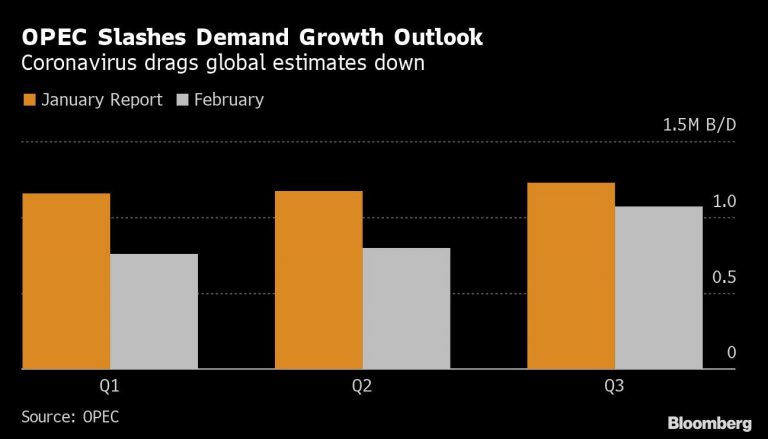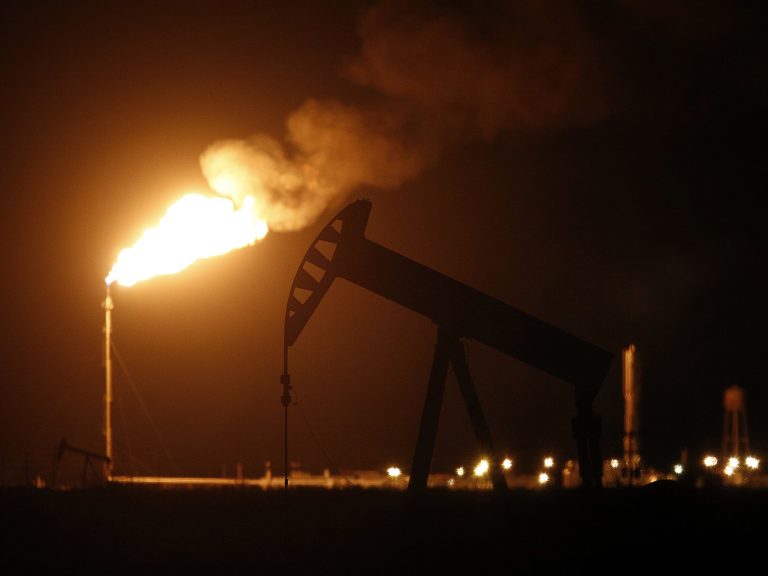Gas demand in transport sector to rise 3.5% annually to 478bcm in 2050: GECF

Gas demand in the transport sector has been forecast to rise at an annual pace of 3.5% over the GECF outlook period (until 2050), much faster than in other sectors, achieving about 478bcm in 2050. Transport utilisation will account for 8% of global gas consumption, Doha-based Gas Exporting Countries Forum (GECF) said in its latest outlook. In 2018, natural gas demand in the transport sector totaled 157bcm, constituting 4% of global gas consumption. Nearly 56% (87bcm) was related to the usage in pipeline transport, 44% to the road (58bcm) and marine (11bcm) segments, GECF said in its ‘Global gas outlook 2050’ released in Doha recently. GECF forecasts show that this robust gas demand growth rate will be encouraged by important progress in natural gas vehicles (NGVs), partially through policy initiatives aimed at offsetting transportation emissions, which account for more than 24% of global GHG emissions. The International Maritime Organisation (IMO) regulations are also forecast to have an impact on gas demand in transport, as the maritime industry begins to switch to Liquefied natural gas (LNG). “In spite of the growing interest of gas applications in the railway industry, demand volumes in this segment are forecast to develop at a moderate pace, while road transport will drive consumption,” GECF noted. About 214bcm of incremental gas volumes to 2050 are expected to stem from the development of the global NGV market. The use of LNG as a marine bunkering will be another promising area with additional consumption of 76bcm within the forecast horizon. Overall, global gas demand in the land and marine transport segments (excluding gas used in pipeline transport) is projected to rise by about 300bcm, from 70bcm in 2018 to over 370bcm by 2050. It will correspond to a growth rate of 5.4% per year, GECF noted. The increasing availability of natural gas, together with its economic and environmental advantages, make NGVs a very prominent alternative to diesel and gasoline-based engines in road transport. Liquefied petroleum gas (LPG) is also widely used across the world. However, being a mixture of propane and butane it is not as clean as natural gas, whose main chemical component is methane. Over the last decades natural gas, predominantly in the form of compressed natural gas (CNG), has made remarkable progress in various sub-markets – passenger buses, light commercial vehicles (LCVs) as well as heavy-good vehicles (HGVs) and special mining and haulage company trucks. Surging by almost 17% per year, natural gas demand in the road transport segment increased from 4bcm in 2000 to about 58bcm in 2018. Major contributions to this growth came from Asia Pacific (China, India, Pakistan) and the Middle East (particularly, Iran), while Latin America countries (mainly, Argentina and Brazil) experienced moderate rise, staying around the same volumes from 2005 to 2018. In spite of the impressive growth rate, natural gas represents less than 2.5% of the total energy consumed in the global road transport market, which is currently dominated by oil-based products — gasoline and diesel — with a 96% share. As many countries are adjusting legislation to reduce the environmental impact of transportation modes and setting targets to mitigate air pollution, GECF anticipates that the role of methane in this segment will grow over the forecast period, assuming a higher uptake of NGVs and a corresponding level of gas demand. Favourable government policies and regulatory frameworks are expected to be the forces driving increasing penetration of natural gas in road transport. The natural gas share of energy demand in the global road transport market (estimated to grow from 2,154mn tonnes oil equivalent — Mtoe in 2018 to 2,420Mtoe by 2050) — is forecast to rise from 2.5% in 2018 to 10% by 2050, while petrol and diesel will go down from 96% to 83%. Over the same period, electricity use is projected to increase from 0.3% to 6%, a much more impressive growth. Given that EV penetration into all vehicle classes is underway, they are considered to be a more realistic option for the passenger, public transport and LCV segments, while the potential of NGVs could be much higher in the HGV segment, where transport costs are more vital. Moreover, environmental regulations are set to be stricter, propelling fuel replacement in oil-based products. In this context, GECF noted the future prospects of natural gas will be mostly concentrated in HGVs, driven by anticipated restrictions on the use of diesel trucks in a range of countries. The majority of gas demand is expected to come from LNG powered trucks thanks to their high annual mileage. It is worth mentioning that governments of more than 10 countries in 2017-2019 introduced forward-looking sales bans on new diesel or petrol vehicles for 2025-2040, which represents an additional push for gas usage, GECF said.









BONN – In the face of climate change, providing reliable supplies of renewable energy to all who need it has become one of the biggest development challenges of our time. Meeting the international community’s commitment to keep global warming below 1.5-2°C, relative to preindustrial levels, will require expanded use of bioenergy, carbon storage and capture, land-based mitigation strategies like reforestation, and other measures.
The problem is that these potential solutions tend to be discussed only at the margins of international policy circles, if at all. And yet experts estimate that the global carbon budget – the amount of additional carbon dioxide we can still emit without triggering potentially catastrophic climate change – will run out in a mere ten years. That means there is an urgent need to ramp up bioenergy and land-based mitigation options. We already have the science to do so, and the longer we delay, the greater the possibility that these methods will no longer be viable.
Renewable energy is the best option for averting the most destructive effects of climate change. For six of the last seven years, the global growth of renewable-energy capacity has outpaced that of non-renewables. But while solar and wind are blazing new trails, they still are not meeting global demand.
A decade ago, bioenergy was seen as the most likely candidate to close or at least reduce the supply gap. But its development has stalled for two major reasons. First, efforts to promote it had negative unintended consequences. The incentives used to scale it up led to the rapid conversion of invaluable virgin land. Tropical forests and other vital ecosystems were transformed into biofuel production zones, creating new threats of food insecurity, water scarcity, biodiversity loss, land degradation, and desertification.
In its Special Report on Climate Change and Land last August, the Intergovernmental Panel on Climate Change showed that scale and context are the two most important factors to consider when assessing the costs and benefits of biofuel production. Large monocultural biofuel farms simply are not viable. But biofuel farms that are appropriately placed and fully integrated with other activities in the landscape can be sustained ecologically.
Equally important is the context in which biofuels are being produced – meaning the type of land being used, the variety of biofuel crops being grown, and the climate-management regimes that are in place. The costs associated with biofuel production are significantly reduced when it occurs on previously degraded land, or on land that has been freed up through improved agriculture or livestock management.
Under the 1.5°C warming scenario, an estimated 700 million hectares of land will be needed for bioenergy feedstocks. There are multiple ways to achieve this level of bioenergy production sustainably. For example, policies to reduce food waste could free up to 140 million additional hectares. And some portion of the two billion hectares of land that have been degraded in past decades could be restored.
The second reason that bioenergy stalled is that it, too, emits carbon. This challenge persists, because the process of carbon capture remains contentious. We simply do not know what long-term effects might follow from capturing carbon and compressing it into hard rock for storage underground. But academic researchers and the private sector are working on innovations to make the technology viable. Compressed carbon, for example, could be used as a building material, which would be a game changer if scaled up to industrial-level use.
Moreover, whereas traditional bioenergy feedstocks such as acacia, sugarcane, sweet sorghum, managed forests, and animal waste pose sustainability challenges, researchers at the University of Oxford are now experimenting with the more water-efficient succulent plants. Again, succulents could be a game changer, particularly for dryland populations who have a lot of arid degraded land suitable for cultivation. Many of these communities desperately need energy, but would struggle to maintain solar and wind facilities, owing to the constant threat posed by dust and sandstorms.
In Garalo commune, Mali, for example, small-scale farmers are using 600 hectares previously allocated to water-guzzling cotton crops to supply jatropha oil to a hybrid power plant. And in Sweden, the total share of biomass used as fuel – most of it sourced from managed forests – reached 47% in 2017, according to Statistics Sweden. Successful models such as these can show us the way forward.
Ultimately, a reliable supply of energy is just as important as an adequate supply of productive land. That will be especially true in the coming decades, when the global population is expected to exceed 9.7 billion people. And yet, if global warming is allowed to reach 3°C, the ensuing climatic effects would make almost all land-based mitigation options useless.
That means we must act now to prevent the loss of vital land resources. We need stronger governance mechanisms to keep food, energy, and environmental needs in balance. Failing to unleash the full potential of the land-based mitigation options that are currently at our disposal would be an unforgiveable failure, imposing severe consequences on people who have contributed the least to climate change.
Bioenergy and land-based mitigation are not silver bullets. But they will buy us some time. As such, they must be part of the broader response to climate change. The next decade may be our last chance to get the land working for everyone.